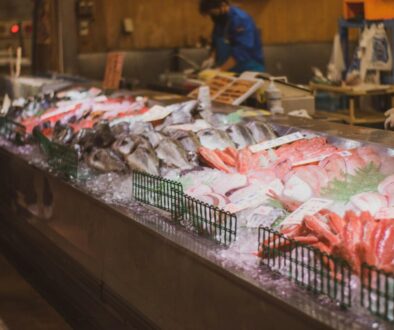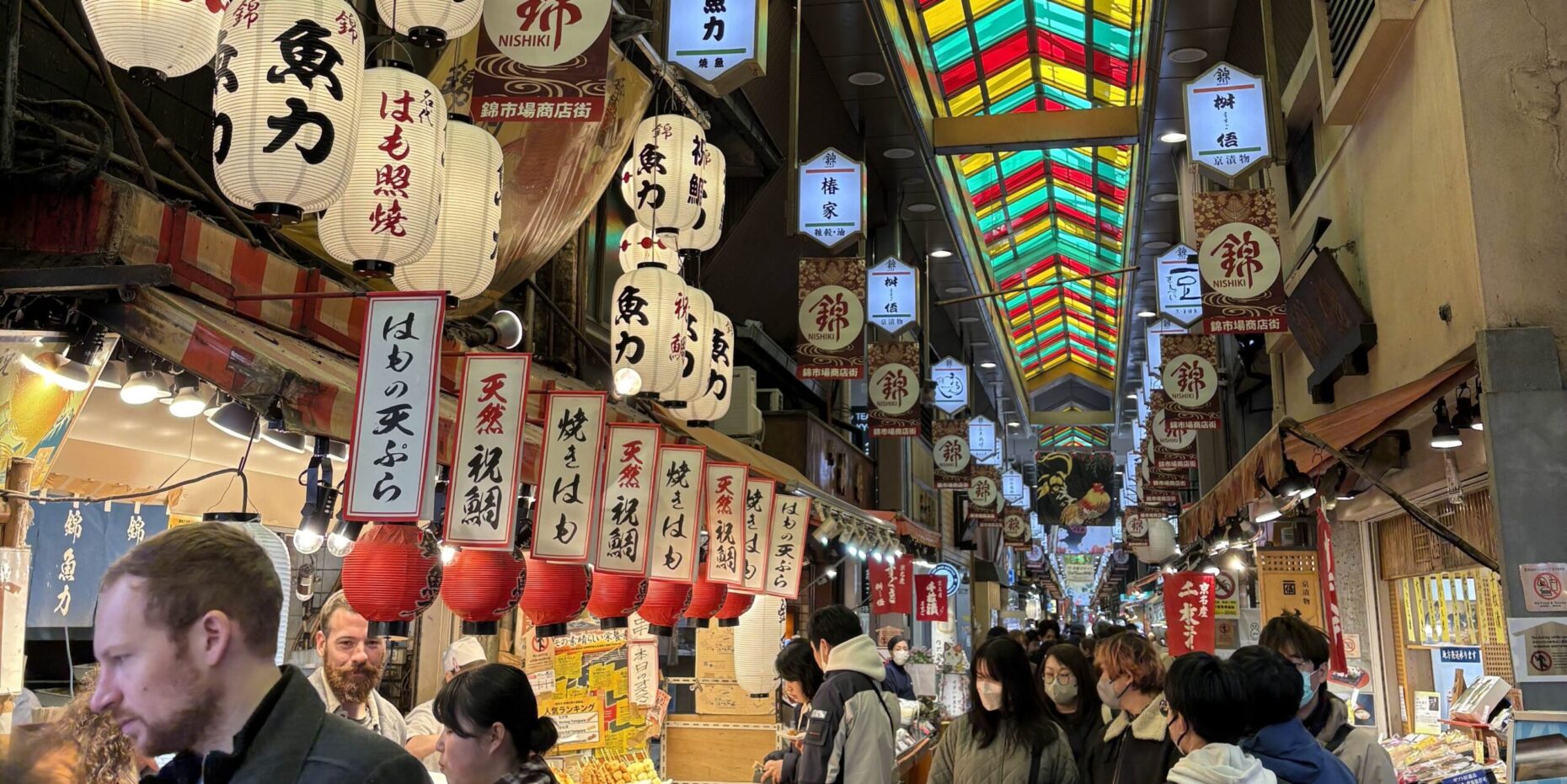
Located in the heart of Kyoto’s downtown district, Nishiki Market is a bustling narrow street full of vibrant tapestries, delicious smells, and plenty of mouth-watering food to try.
Known as “Kyoto’s Kitchen” by many, this busy market is a must-visit for anyone looking to dive into Japan’s rich culinary traditions. From savory street foods that use local ingredients to delicate sweets, Nishiki Market offers an unforgettable taste of Kyoto.
With over 130 shops that each offer something unique, it might seem daunting to choose where exactly you want to spend the limited space in your stomach. But there’s no need to worry! In this guide, we’ll not only share our favorite bites, but also take a look at the rich history and traditional foods that make Nishiki Market the special destination that it is.
But first, we’d like to let you know some quick tips on manners in this market.
Manners in the Market
While exploring the market, you may notice signs everywhere saying “No eating and walking.” Although this is a rule that is lightly enforced throughout most of Japan, it is especially strict in the Nishiki market. In order to keep the roads clean and so as not to spill food on anyone, please do not eat and walk in the Nishiki market. Instead, find a place to stand nearby the vendor you got your food from, or eat inside if there is space available. A bonus to that is that you can give the vendor your garbage when you are done eating and they will throw it away for you.
Although being mindful of eating and walking is the biggest rule in Nishiki, another tip we’d like to mention is that there is no haggling at this market. Japan is a country where haggling is not common practice, so please refrain from doing so.
Thank you for being kind and following the rules when enjoying Japan and its culture!
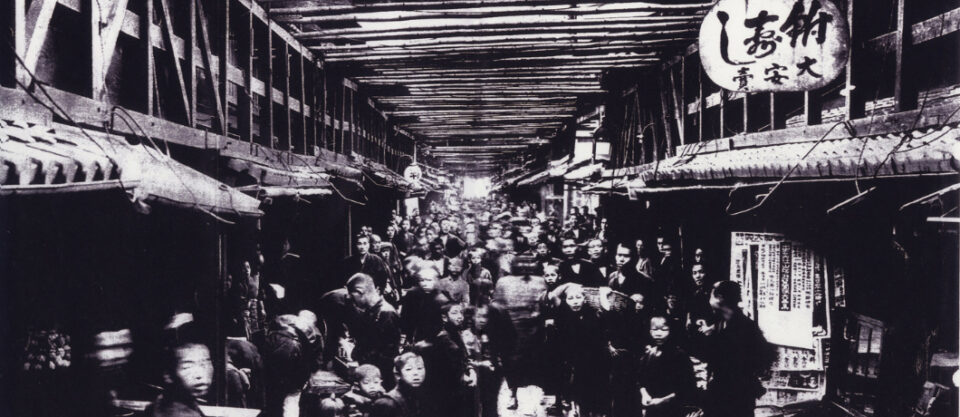
The History of the Nishiki Market
Although Nishiki was officially recognized as a market more than 400 years ago, people had been selling food and produce in the area since as early as the 700s. The reason that the Nishiki area was initially chosen was due to the cold groundwater that runs underneath it.
Each shop built two wells to access this water. One well was used to access the water, while the other well was dug in a way that allowed food and produce to be stored and kept fresh. The cold water would keep the temperature in the larger well cold, creating a natural refrigerator. Because of its unique history with refrigeration, the area also once served as a kind of warehouse district. Here, they would store produce for restaurants and for the nobility.
Another reason that the area was chosen was because of the location. As Kyoto city continued to develop over time, the market grew alongside it. By the Edo period (1603-1868), it became the primary supplier of food for the nobility and commoners alike. Being in the heart of Kyoto, it was near the Imperial Palace, which made it an ideal place to source fresh produce, seafood, and other goods. The name “Nishiki” itself can be roughly translated to “luxurious textile,” which points to the market’s initial connection to both luxury goods and food.
Nishiki Market Today
Today, the bustling Nishiki Market is a 400-meter-long shopping street lined with more than 130 shops. Visitors can find a large variety of goods and delicious food here, including traditional sweets, Kyoto pickles, fresh seafood, and fried delicacies.
While it remains a testament to the city’s rich culinary history, the market has seamlessly blended old traditions with modern-day innovations, making it a must-visit destination for locals and tourists alike.
Next, we will highlight some of the 130+ shops that we recommend visiting when exploring this bustling market street. We’ll be starting at the western entrance to the market and going east, so if you want to follow along with this guide, be sure to start from there!
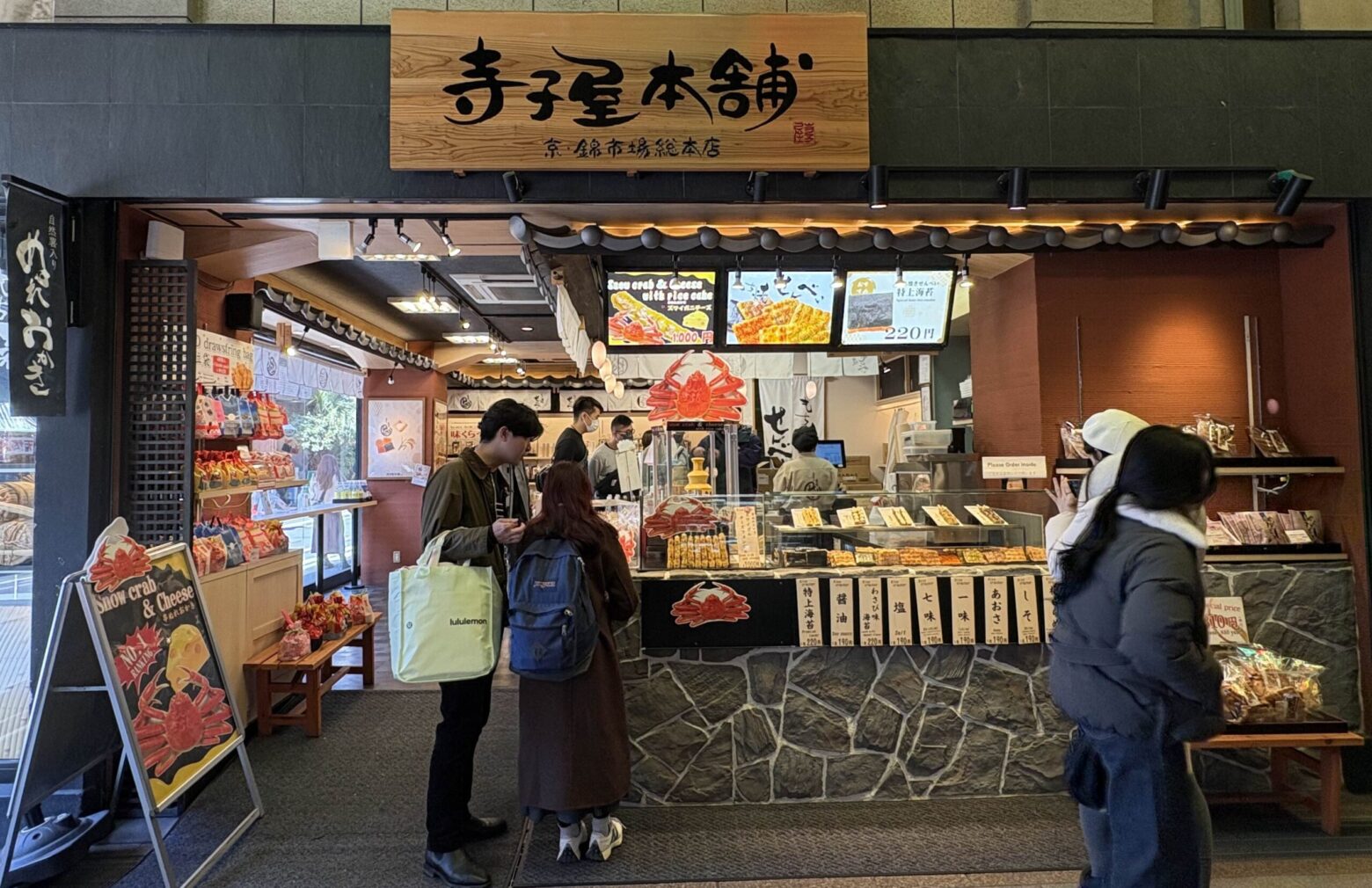
Right at the western entrance of Nishiki market holds the first stop on our list, Terakoyahonpo. This shop specializes in two things, fresh senbei (rice crackers), and nure okaki. They have 9 different flavors of senbei that are all served fresh and warm. We recommend the shiso flavor, which is a refreshing salty and sour flavor. It’s the perfect snack to have before venturing into Nishiki!
You may have heard of rice crackers before, but you probably haven’t heard of nure okaki. Nure okaki is a unique kind of rice cake that has been dried and soaked in soy sauce. It has a crunchy outside with a chewy inside, and you can get different toppings on it. We recommend the sweet white miso topping, since the sweet goes well with the salty soy sauce taste. Give this unique snack a try!
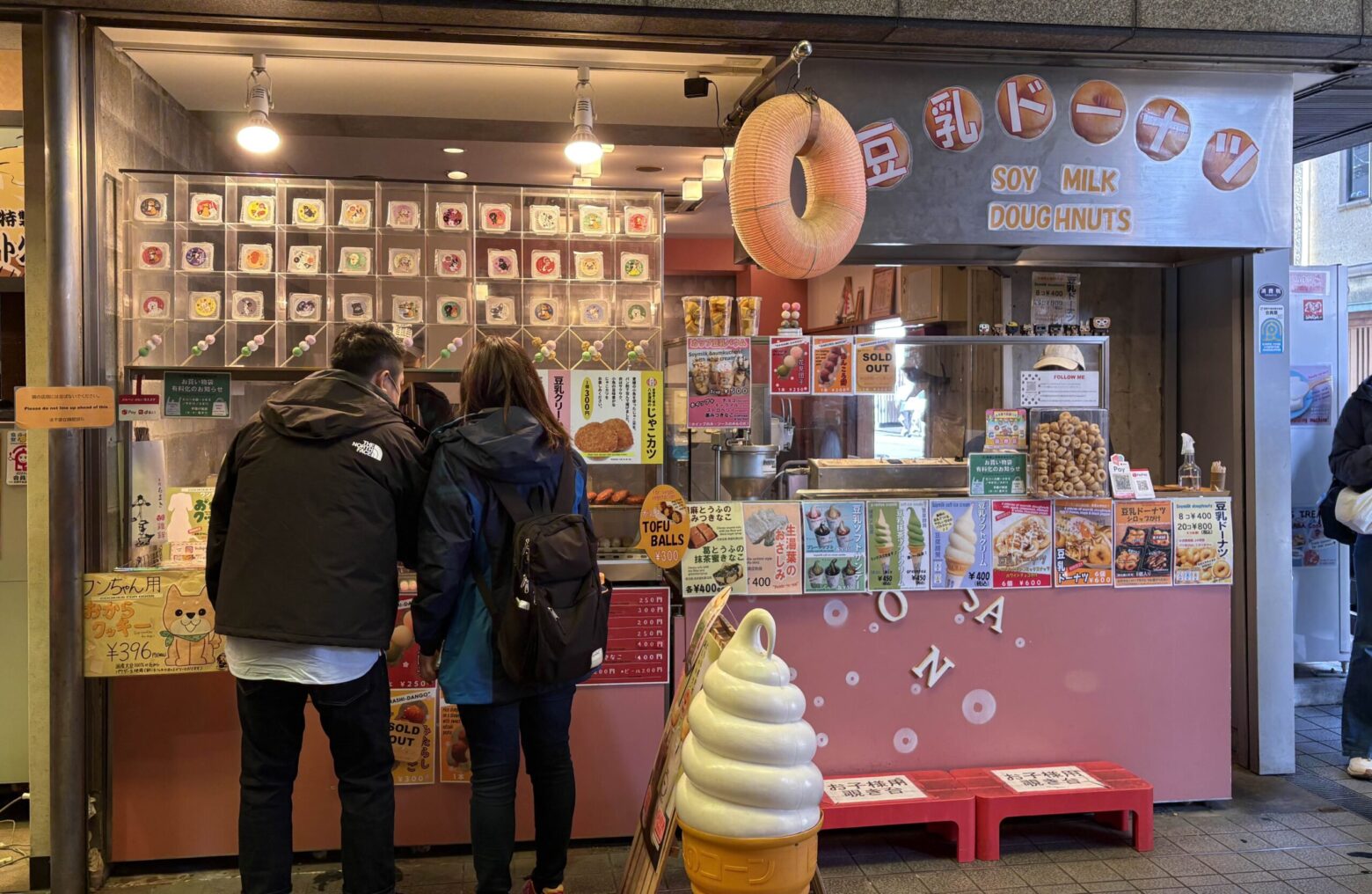
Have you ever had donuts made with soymilk? You can try them at Konna Monja, a tofu vendor that not only specializes in all things tofu, but also soymilk sweets of various kinds! Our personal favorite are their soymilk donuts.
Made with only a few ingredients, this vendor’s soymilk donuts are fluffy, not too sweet, and absolutely addicting! You can buy the donuts plain or with sweet or savory toppings, such as chocolate or caramel syrup, cheese and eggs, or whatever their monthly flavor is.
Not interested in donuts? They also have soymilk ice cream, soymilk drinks, and even soymilk baumkuchen. There’s something to enjoy for everyone!
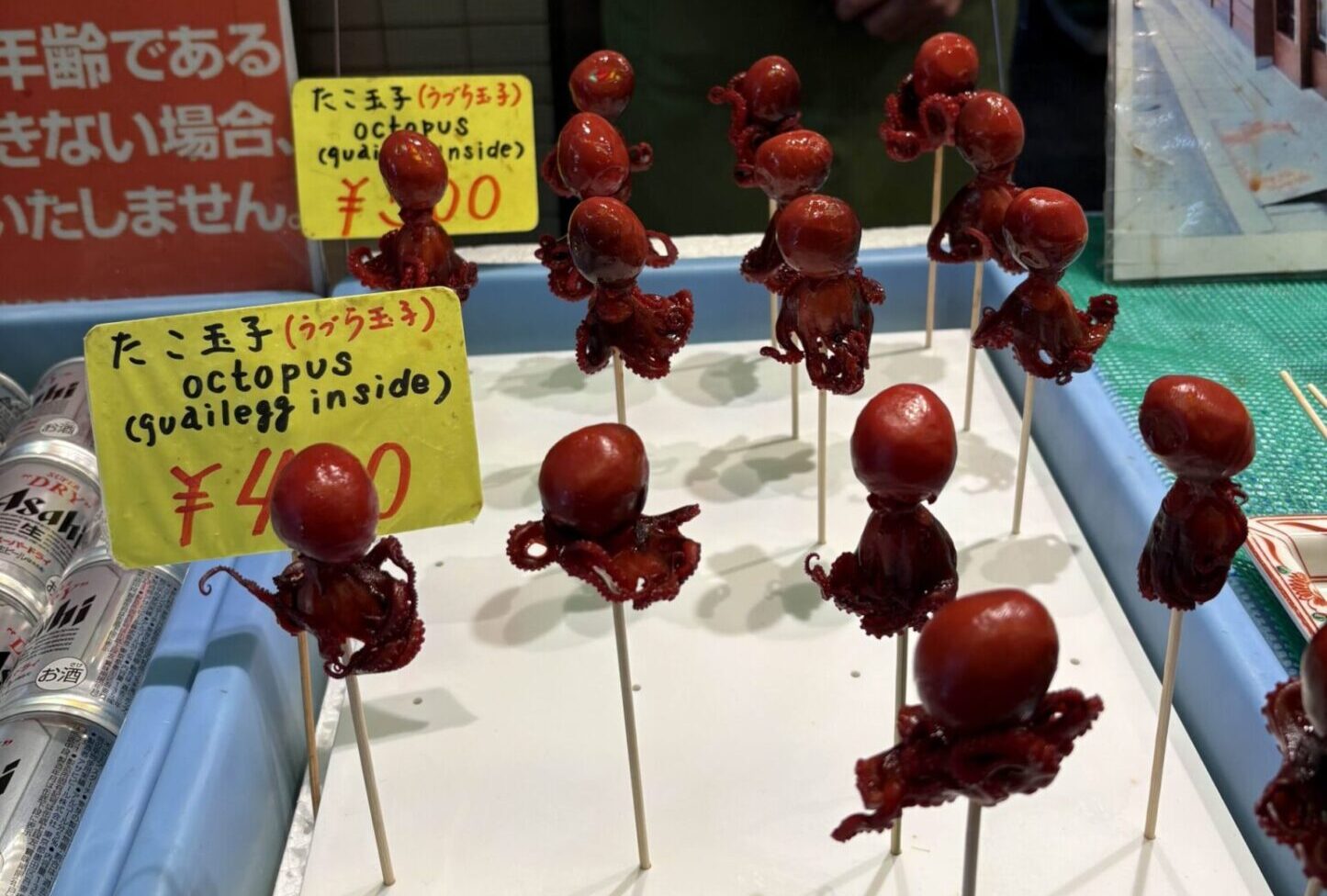
If you’ve looked up the Nishiki Market on Google, you may have come across some pictures of small red octopus with big round heads. Called the Tako Tamago (octopus and egg), this strange delight garnered attention on social media 15 or so years ago, and has stuck around since! It’s basically become for people to come to Nishiki market and try one.
Want to know the best place to try them? We recommend Yamasho, a small family-owned shop that sells a variety of seafood, including the tasty little octopi. They’re covered with a sweet teriyaki-like sauce and the vendor blow-torches them for some extra deliciousness!
Eat it all in one bite for the best experience, and be sure to take some pictures to show your friends!
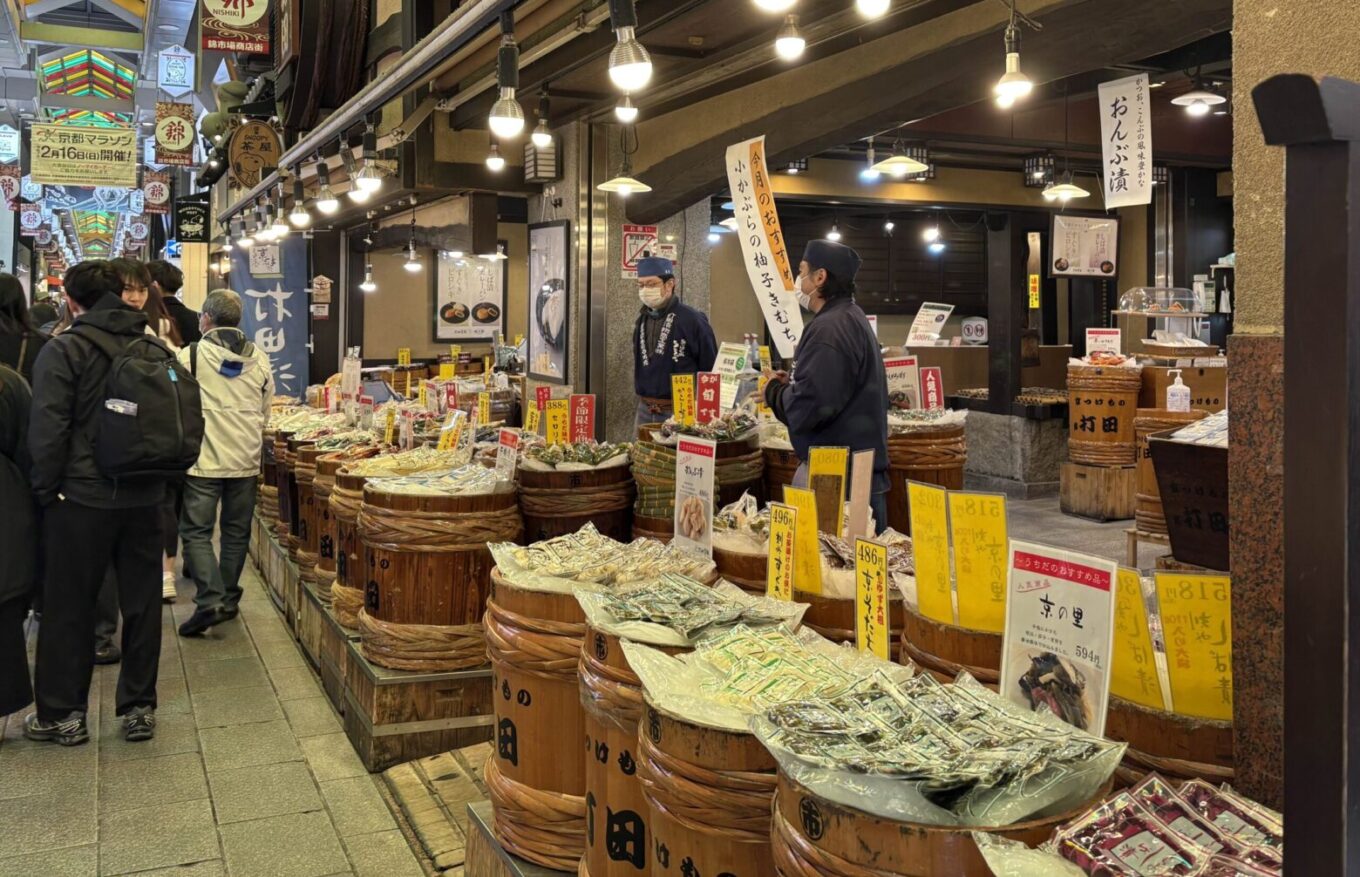
Established in 1940 in Kyoto, Uchida is a local favorite when it comes to buying Kyoto’s famously delicious pickled vegetables.
Vegetables have been at the forefront of Kyoto’s cuisine due to two factors: the large Buddhist monk population, who all follow a strict vegetarian diet, and the inland location of the city.
Monks’ vegetarian diets have played a significant role in shaping the food culture of Kyoto. The preservation of vegetables, especially in pickled forms, is part of an age-old practice tied to religious customs. Kyoto also boasts some of the softest water in Japan, which is said to help in growing especially delicious vegetables.
The tastiest way to preserve vegetables is to pickle them, and throughout the centuries Kyoto has become a master at pickling vegetables. Going to Uchida, you can see the large variety (40+ kinds!) of pickles that have been created and produced in Kyoto. They offer samples, so go and try some!
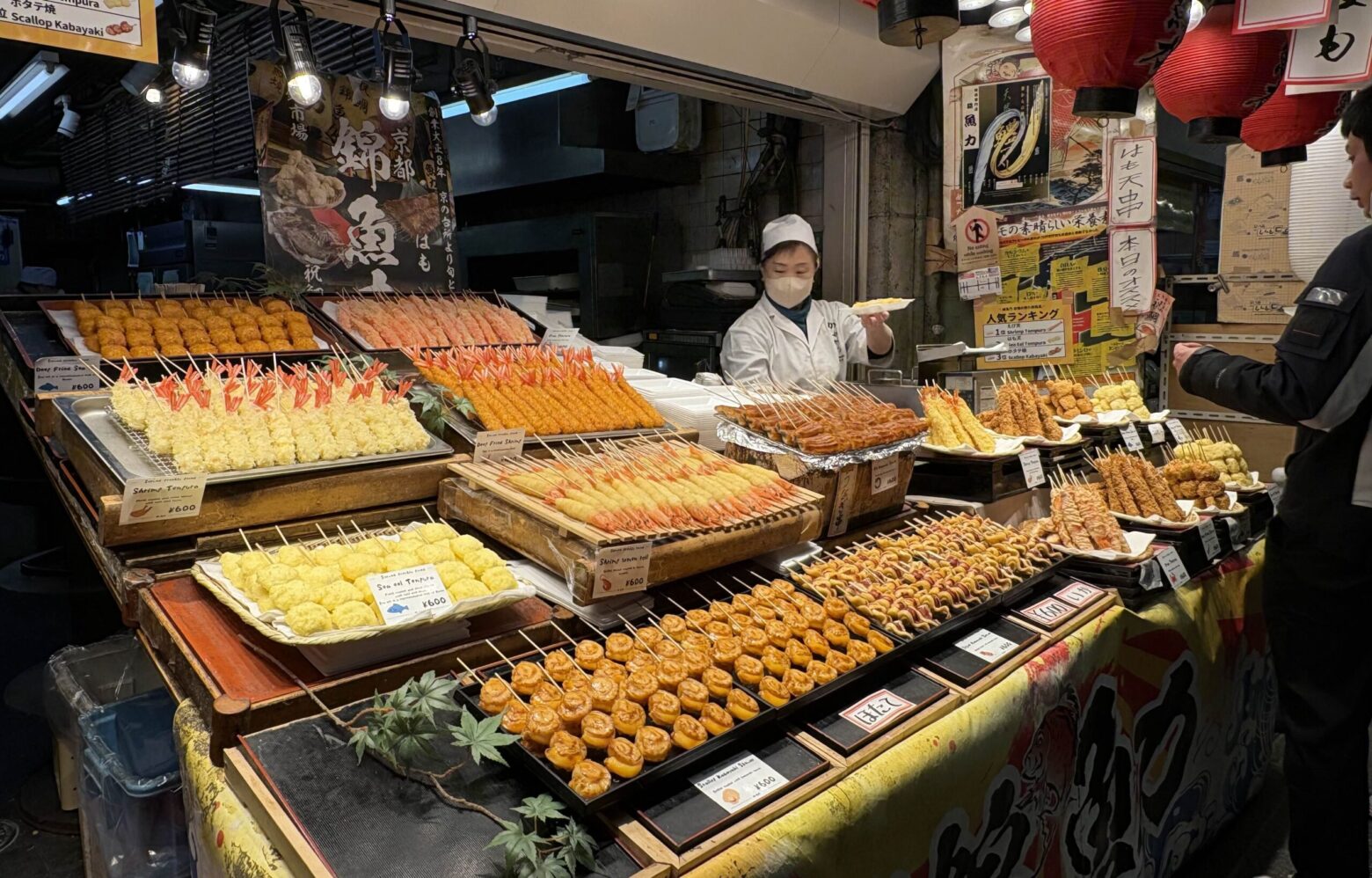
What is a food market in Japan without some delicious fish? Uoriki is a long-established shop that has been selling all kinds of fried and grilled fish since 1919.
When it comes to recommending where people eat at the Nishiki market, this would be our number one! We recommend trying the hamo (pike conger eel) tempura, a local delicacy of Kyoto, and the shrimp tempura, because you can never go wrong with freshly fried shrimp tempura.
This fish shop is also famous for its ornamented whole grilled sea bream, which can be ordered year-round. A staggering 8,000+ sea breams are grilled for New Year’s alone!
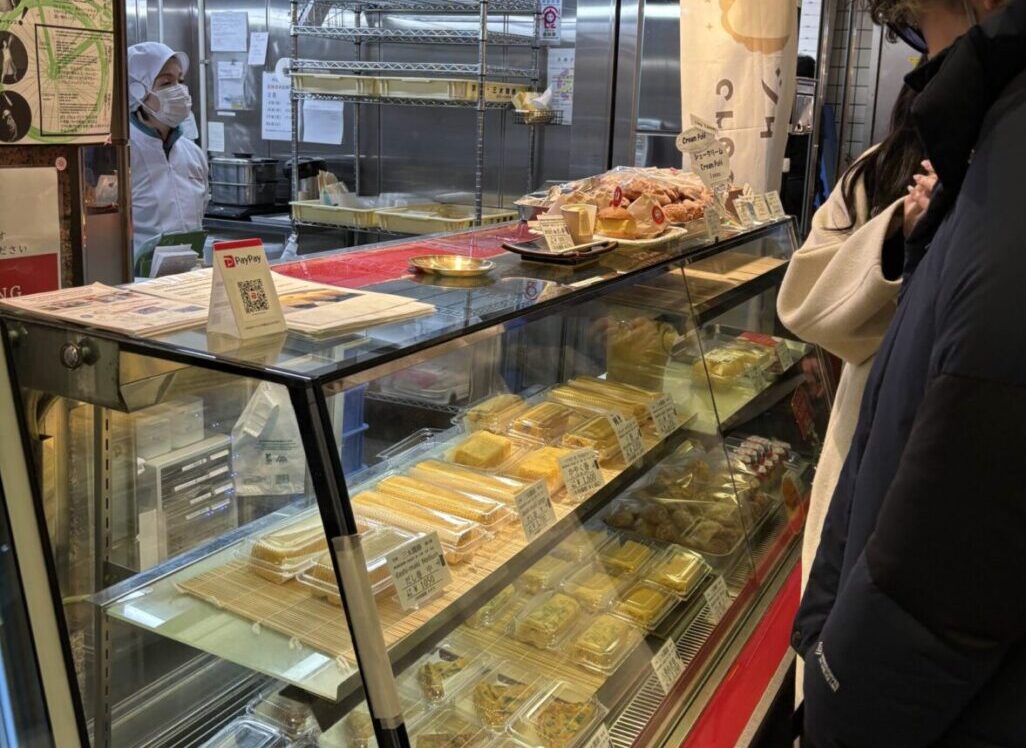
Have you ever heard of dashimaki? It is a type of Japanese rolled omelet containing only two ingredients; dashi soup broth and eggs. Dashimaki is sold throughout the Nishiki market due to its delicate dashi flavor and soft texture. It is commonly served as a street food or at small eateries, making it the perfect food to sell at Nishiki.
Miki Keiran has been making these savory and fluffy omelets since 1928. Not only do they sell to those looking for a bite in the Nishiki market, but also to restaurants and bento stores. Just take a look inside their store and you’ll see rows of rectangular dashimaki pans that are used to quickly cook up some umami-filled goodness!
If you’re not into savory omelets, they also serve cream puffs made with their high-quality eggs.
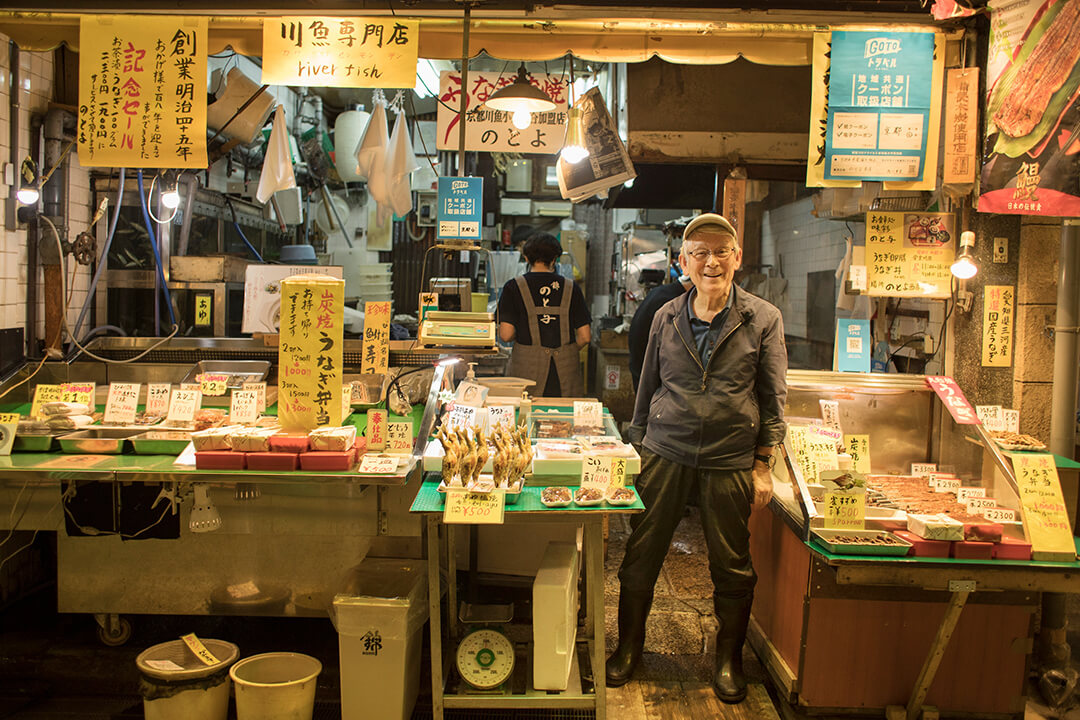
Being far away from the ocean, Kyoto relied heavily on river fishing in the past. You can still find that history alive and well at Notoyo. Here, they serve all kinds of river fish, including freshly grilled unagi eel and salted sweetfish. Shops that specialize in river fish are quite rare in Japan, so many people all over Japan come here to check out their delicacies.
If you’re an adventurous eater, then this is the store for you. They sell unagi liver that is coated in their signature savory and sweet eel sauce, and it is 100% worth a try! Oddly enough, they also sell grilled sparrows (yes, the bird!), which is a traditional, albeit infamous, food in Kyoto.
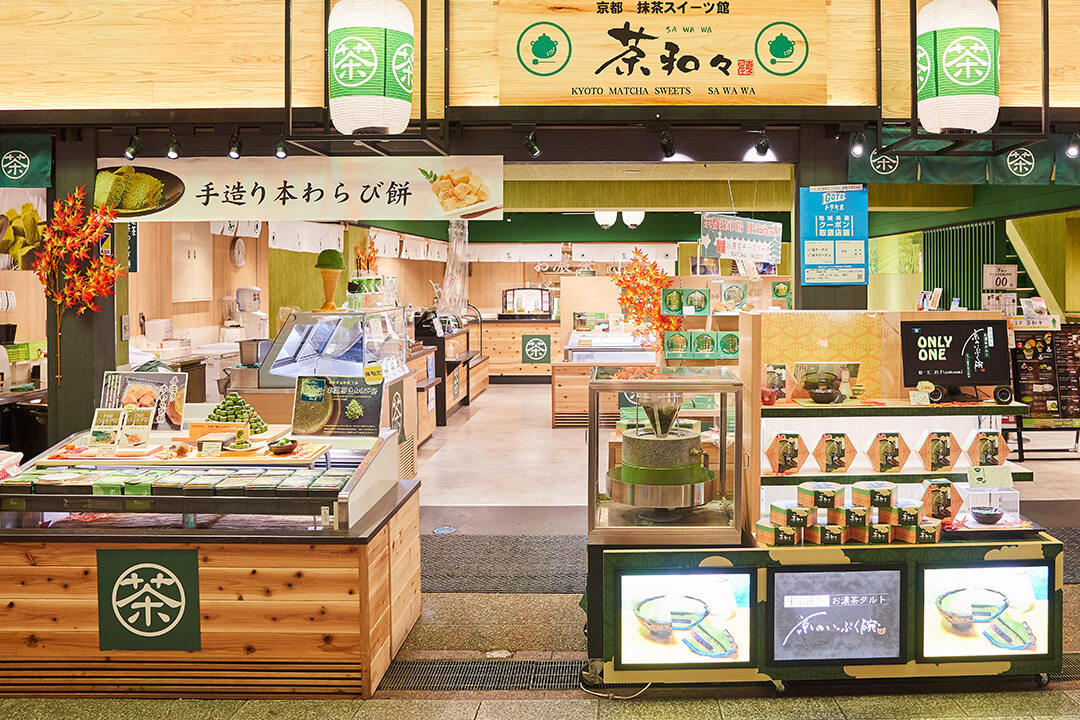
Hungry for some dessert? No worries, because the Nishiki Market offers tons of traditional Japanese sweets. The one we’d recommend, though, is Sawawa’s matcha sweets.
Sawawa is a matcha specialty shop that originally comes from a town not too far south of Kyoto called Uji. The name Uji might sound familiar to those who love matcha, and that is because Uji is famously known for their high-quality matcha powder.
At Sawawa, you can find various matcha sweets to fit whatever you’re craving, such as matcha ice cream of varying intensities, matcha warabi mochi (sweet and bouncy bracken starch mochi covered in matcha powder), and matcha lattes. Make sure to stop on by to get your matcha fix!
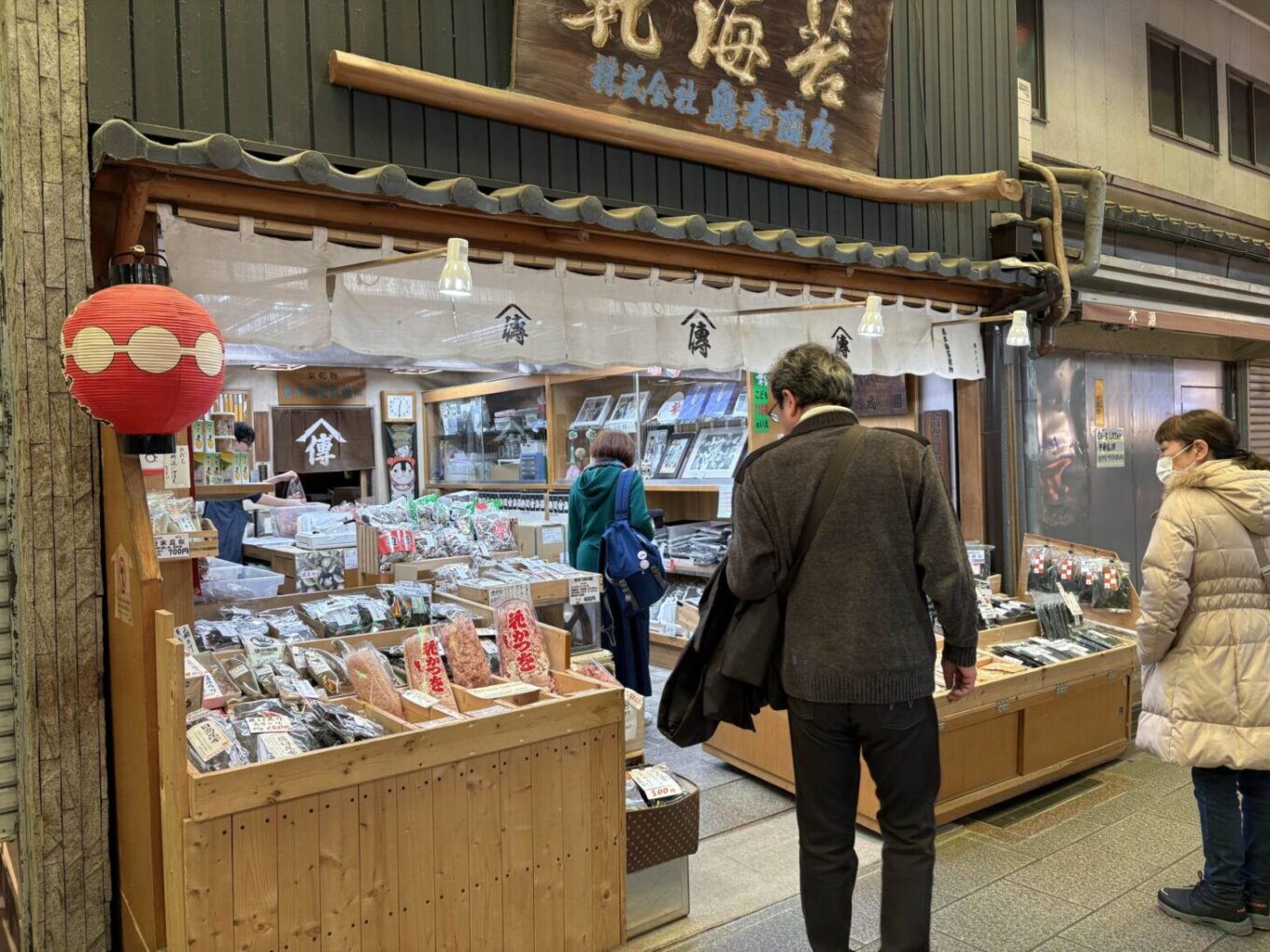
Whether you’re a seasoned foodie or a curious traveler, Nishiki Market promises a unique and unforgettable experience. With its rich history, vibrant atmosphere, and mouthwatering offerings, there’s no better place to dive into Japan’s culinary wonders.
So, make sure to leave some time to explore this iconic market! You won’t be disappointed.
Feeling overwhelmed with all the choices? Book our Nishiki Market tour to get the best bites with zero stress!
Want to explore other ways to enjoy Kyoto’s food culture with a high-quality guide? Our Kyoto Night Food Tour, where we go to three different izakayas and try local Kyoto cuisine, is perfect for you!

